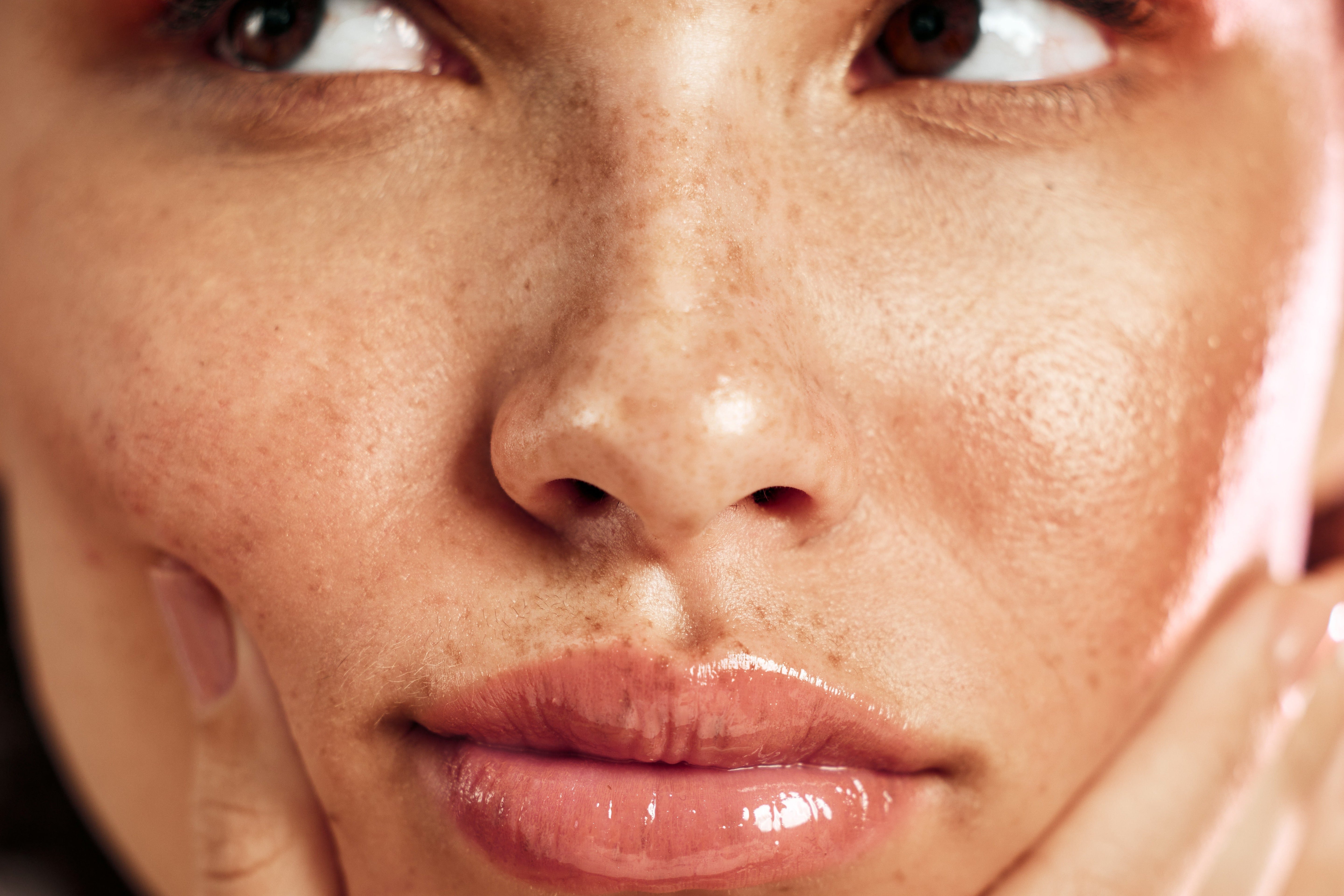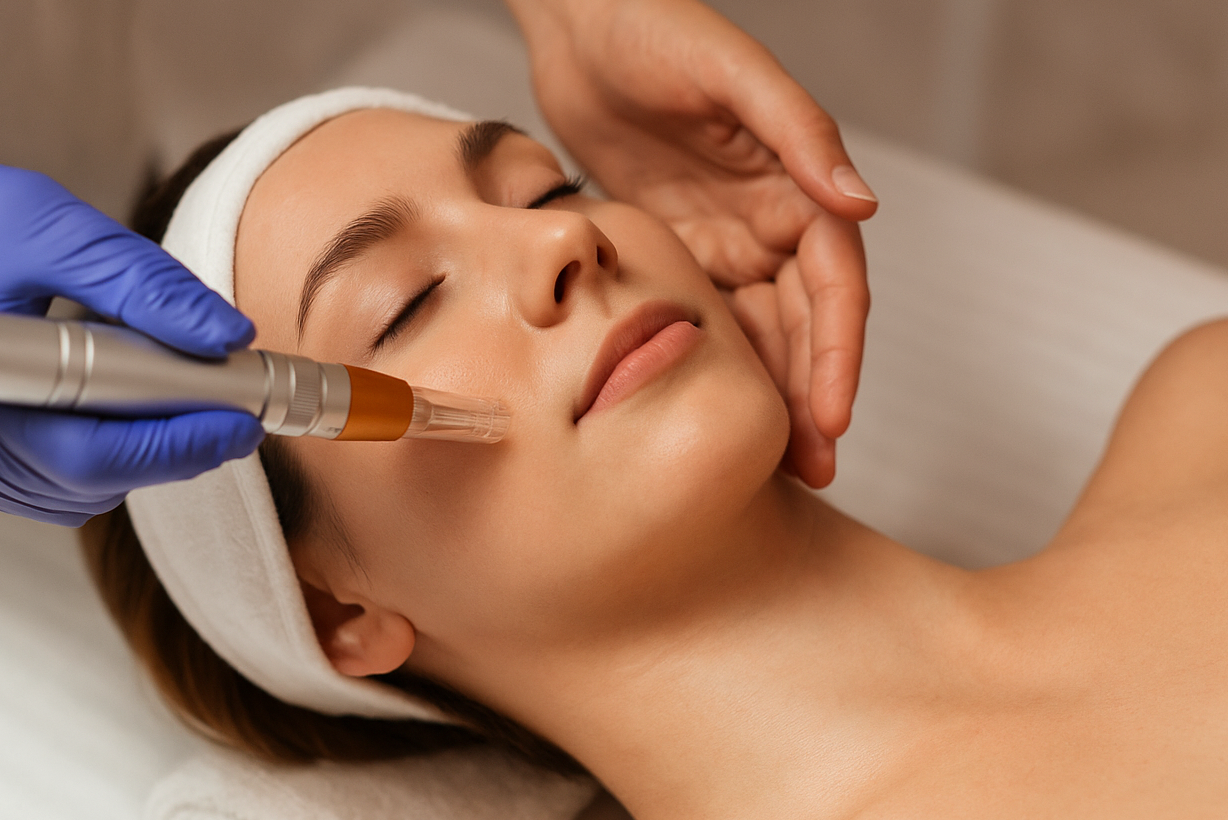Article: How to Layer Your Skincare (The Right Way, According to Science)

How to Layer Your Skincare (The Right Way, According to Science)
If you could care less about all the sciency stuff, just follow our handy daytime and nighttime layering graphics and call it a day. But if you’ve ever wondered why you shouldn’t slap oil on first, or why sunscreen always goes last, then stick around — because the order of your routine isn’t just skincare snobbery, it’s actual skin science.


Short version: layer from formulas that are mostly water and light → to ones that are richer in lipids and film-forming. Water brings hydration and actives; lipids slow water loss and lock that hydration in. SPF always goes last because it must form an even, undisturbed film.
Below is the “why” behind each step in Paris Laundry’s Daytime and Nighttime order, using what dermatology knows about the skin barrier, diffusion, and formulation science.
First principles (why order matters)
- Your barrier is lipid-based. The outer layer (stratum corneum) is bricks-and-mortar: corneocyte “bricks” held together by cholesterol, ceramides, and fatty acids. It’s naturally hydrophobic, so water evaporates easily unless we slow transepidermal water loss (TEWL) with emollients/occlusives.
- Diffusion favors small, water-compatible actives applied early. Ingredients move into skin mostly by passive diffusion. The “500-Dalton rule” is a useful heuristic: very large molecules rarely pass through intact skin. Small, water-soluble actives (e.g., niacinamide ~122 Da) belong in serums and should touch skin early.
- Oils don’t “hydrate.” Oils contain no water. They reduce water loss by forming semi-occlusive films and by replenishing barrier lipids. That’s why oils work best over damp skin or over a moisturizer (which contains water + humectants). Used alone on dry skin, many oils feel greasy yet do little for hydration.
- Vehicles > single ingredients. Absorption depends as much on the vehicle (gel, emulsion, oil, balm, film formers) and pH as the ingredient itself. We lean water-based first, then richer textures.
Daytime layering (Paris Laundry)
1) Cleanser → 2) Toner → 3) Serum → 4) Eye Cream → 5) Moisturizer → 6) Facial Oil → 7) SPF
1) Cleanser (keep the acid mantle happy)
Why first: Removes sebum, sunscreen, and soil so actives can make contact with skin.
Science note: Mild, pH-balanced surfactants preserve the acid mantle (~pH 4.5–5.5), supporting enzymes that organize barrier lipids. Harsh cleansers raise pH and increase TEWL.
2) Toner (re-wet + prep)
Role: Modern toners (not astringent alcohol mists of the past) add humectants (e.g., glycerin, hyaluronate) and restore surface pH after cleansing.
Why now: Humectants bind water in the stratum corneum so downstream emollients/occlusives have water to seal in.
3) Serum (small, potent actives)
Role: High concentration of actives in a water-based vehicle for efficient diffusion.
Science examples:
Niacinamide (small, water-soluble): supports barrier lipids, moderates discoloration and oil production.
Vitamin C (ascorbic acid) prefers low pH vehicles; derivatives use neutral pH emulsions.
Why now: Water-first ensures minimal interference from heavier films and better partitioning into the skin.
4) Eye Cream (formula tuned for a thin, reactive area)
Role: The eyelid stratum corneum is thinner and more sensitive. Eye formulas typically reduce fragrance and strong acids, and use film-formers that minimize migration.
Why here: A light layer before heavier creams helps targeted actives sit where they’re intended without sliding around.
5) Moisturizer (hydrate + repair + reduce TEWL)
What it does: Combines humectants (draw water), emollients (smooth), and occlusives (slow evaporation). Also a vehicle for barrier lipids (ceramides/cholesterol/fatty acids).
Why before oil: This step delivers the actual water and water-binding agents that oils can later lock in.
6) Facial Oil (seal + support)
What it does: Adds emolliency and a semi-occlusive layer; certain fatty acids (e.g., linoleic-rich oils) help replenish barrier lipids.
Key truth: Oils don’t add water. They work better over damp skin or moisturizer because they reduce TEWL and keep that water in place. Used alone on dry skin, they have little hydration to lock in—hence a greasy feel with limited benefit.
7) SPF (film integrity is everything)
Why last: Sunscreens—mineral or organic—must form a continuous, undisturbed film to reach labeled protection. Mixing SPF with other products or applying creams/oils after SPF can dilute or disrupt that film. Apply enough (roughly 2 mg/cm²; about 1/4–1/2 teaspoon for face/neck) and let set before makeup.
Nighttime layering (Paris Laundry)
1) Oil Cleanser → 2) Gel Cleanser → 3) Toner → 4) Serum → 5) Eye Cream → 6) Moisturizer → 7) Face Oil
1) Oil Cleanser (like dissolves like)
Why first: Sunscreens, long-wear makeup, and sebum are lipophilic. Oil cleansers and balm cleansers solubilize them efficiently.
2) Gel/Cream Cleanser (lift residues; protect barrier)
Why second: A gentle water-based cleanse removes oil-phase residue without over-stripping—double-cleanse done.
3) Toner (re-hydrate, re-balance)
Restores water and humectants to the surface after cleansing; sets the stage for actives.
4) Serum (treatment window)
Night is ideal for retinoids and exfoliants (if used), which can be light-sensitive or irritating in sun.
Buffering option: If retinoids sting, apply moisturizer first (“retinoid sandwich”) to reduce penetration and irritation—an example of adjusting order based on tolerance, not dogma.
5) Eye Cream
Same logic as daytime; choose gentler actives (peptides, niacinamide, caffeine) over strong acids here.
6) Moisturizer
Night moisturizers can be richer (more occlusive) to reduce nocturnal TEWL, which naturally rises at night.
7) Face Oil
Final seal to slow overnight water loss and boost softness by morning. Again: best over a hydrated base.
Why oil after moisturizer works (and when it doesn’t)
- Occlusion science: Occlusives reduce TEWL by creating a diffusion barrier. When you’ve already applied water + humectants (toner/serum/moisturizer), there is water available to retain. Oil on top traps it—hydration rises and the barrier feels comfortable.
- Oil alone on dry skin: There is little water to trap; many oils simply sit on the surface, feel slick, and can even increase TEWL initially if they disrupt lipids (high-oleic oils are more disruptive than linoleic-rich or squalane-based oils).
- Best practice: Apply oils over damp skin or over your moisturizer. Lightweight, stable oils (e.g., squalane, hemi-squalane) are less pore-occluding and less oxidatively unstable.
Smart exceptions & pro tips
- SPF is non-negotiable last. Don’t mix SPF into moisturizer or oil; apply it as its own layer. Reapply during sun exposure.
- Texture trumps “thinnest to thickest.” As a rule it works, but always defer to vehicle and instructions on a treatment (e.g., some benzoyl peroxide or prescription retinoids specify dry skin).
- pH conflicts are overblown but real in edge cases. Very low-pH vitamin C (L-ascorbic acid) and high-pH actives can reduce each other’s stability on contact. If irritation or pilling occurs, separate morning vs. night rather than stacking.
- Large molecules stay mostly surface-side. High-molecular hyaluronic acid forms an excellent surface humectant film; low-molecular fragments penetrate a bit deeper but still don’t reach the dermis—expect plumpness, not “filler-like” effects.
- Skin type can skip steps. Very oily skin can often skip the oil layer. Very dry or cold climates may benefit from a thicker occlusive (e.g., balm) at night.
- Quantity matters as much as order. Use enough moisturizer to actually hydrate and enough SPF to protect; a “whisper” layer won’t perform.
Putting it all together (Paris Laundry flow)
Day: Cleanser → Toner (leave skin damp) → Serum (niacinamide/antioxidants) → Eye Cream → Moisturizer (humectants + lipids) → Facial Oil (optional seal) → SPF (last, even film).
Night: Oil Cleanser → Gentle Cleanser → Toner → Treatment Serum (e.g., retinoid) → Eye Cream → Moisturizer → Face Oil seal.
This order isn’t about following a ritual for ritual’s sake—it’s about physics and physiology: get the water and actives in first, then use lipids to hold them there, and finish with a functional film (SPF by day) that must stay intact to do its job.

